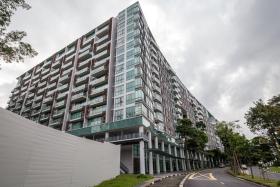Making it safe for drones to fly here
NTU and Civil Aviation Authority of Singapore involved in study
The sky's the limit for drone experts at Nanyang Technological University (NTU).
NTU's Air Traffic Management Research Institute - a joint research centre by NTU and the Civil Aviation Authority of Singapore - is now studying ways to let hundreds of drones, officially known as unmanned aerial vehicles (UAV), fly safely in Singapore's urban airspace, under an aerial traffic management system.
It will consist of designated lanes and air blocks for drones, much like how cars have traffic lights and lanes.
Such a system is essential for Singapore as drone traffic is expected to grow over the next decade, said Professor Low Kin Huat from NTU's School of Mechanical and Aerospace Engineering.
Prof Low, one of the two leaders of the research programme, told The New Paper: "In line with global trends, more and more companies are exploring the use of drones for logistics and surveillance.
"These are just two industries out of the many that will be expected to go big when tapping on drones to improve productivity and commercial viability."
He said his team is trying to establish Singapore's airspace capacities for UAVs - how many UAVs our skies can support at any one time, how to manage them, and how to make more airspace available to UAVs.
Like land space in Singapore, airspace is also scarce.
Singapore's high-density urban landscape means safety, or risk management, is of paramount importance.
Prof Low said: "Given enough UAVs, any airspace can become gridlocked, which means proper management is needed to ensure that traffic continues to flow despite increased demand on airspace in future."
One of the concepts to be tested in NTU's project is geofencing, where virtual fences are set up around restricted areas so that drones cannot fly in.
Such an air traffic management system is bound to happen, said Dr Foong Shaohui from the Singapore University of Technology and Design.
He told TNP: "With growing applications for UAVs, it is inevitable that there needs to be some form of coordination and communication between UAVs and their operators to prevent dangerous collisions and signal interference. Singapore, by virtue of its small land area, also has a small air space.
"A large majority of the airspace is restricted as it is within 5km of an aerodome. Hence, without an organised management system, it would be hard to maximise the use of the limited airspace in Singapore.
"How we achieve this will also be another challenge as current UAVs by far do not feature any active tracking systems (like transponders) that are mandatory in civil aviation.
"Perhaps this is something that will evolve with technology and policy."
Get The New Paper on your phone with the free TNP app. Download from the Apple App Store or Google Play Store now



